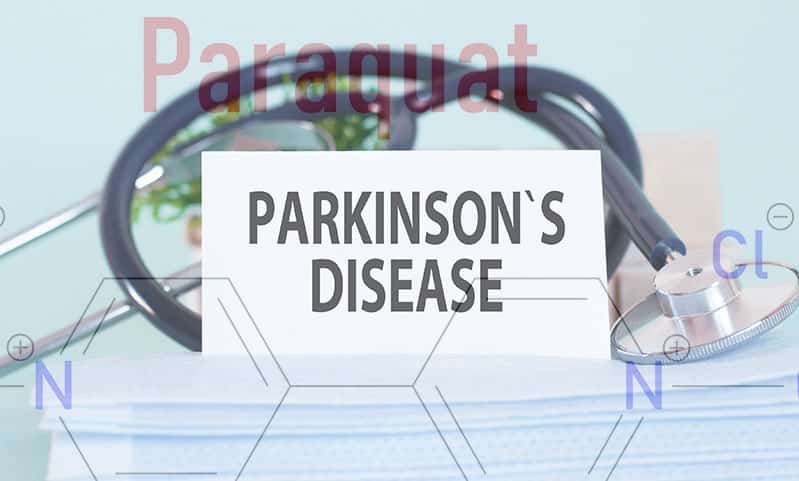The first bellwether trial in the Paraquat/Parkinson’s MDL is scheduled for November 2022.
Other important deadlines are coming even sooner.
Expert witness discovery must be completed by June 2022 and summary judgment motions must be filed by July.
Expert witnesses are usually doctors or engineers who testify about product harm or safety, depending on who the witness works for.
Summary judgment motions are procedural motions.
The MDL started in 2017 with approximately 400 lawsuits.
The number of plaintiffs continues to grow, and the MDL is still accepting new cases.
Potential plaintiffs must provide information about their exposure to paraquat, personal or family history of Parkinson’s Disease, and their financial damages.
Bear in mind, however, that these victims have a limited amount of time to act.
Pesticide Risks
The pesticide era began in the 1940s and 1950s. Advancing technology allowed chemical companies to develop chemical pesticides. New delivery methods, like mass spraying, became available as well.
Early versions of chemical pesticides were strong enough to kill pests, but that’s about it. As successive generations of insects became resistant to these pesticides, chemical companies upped their games.
In the 1970s, the newly formed Environmental Protection Agency (EPA) banned some extremely strong chemical pesticides, like DDT (dichlorodiphenyltrichloroethane).
Later developed pesticides include glyphosate (the active ingredient in Roundup) and paraquat (the active ingredient in Gramoxone).
Furthermore, the anti-DDT studies clearly showed widespread harm. The studies performed on Roundup and paraquat weren’t conclusive enough to prompt EPA action.
So, paraquat remained in production, although its use stirred controversy. New research may be the nail in paraquat’s coffin.
According to the National Institutes of Health, paraquat triples the risk of Parkinson’s Disease. The risk is even greater for people who were directly exposed to paraquat at a young age.
Additionally, paraquat-induced Parkinson’s Disease has at least a ten-year latency period. So, many pesticide exposure victims may be seriously ill without knowing it.
Environmental Tort Nuts and Bolts
Like most commercial pesticides, paraquat is sprayed over large areas for many years.
As a result, thousands of victims are at risk. Over 1,000 lawsuits, which an Illinois federal judge green-lit in February 2022, are already pending against Chevron, Syngenta, and other paraquat/Gramoxone manufacturers.
Establishing liability in environmental tort claims is often time-consuming.
Usually, manufacturers are strictly liable for injuries their defective products cause. The aforementioned NIH study was just the final nail in the coffin. Other studies from as far back as the 1980s clearly demonstrate the paraquat-Parkinson’s connection.
However, a number of defenses are available in such matters.
Therefore, only the most experienced New York personal injury attorney should handle these cases. These defenses are normally twofold: denying the paraquat-Parkinson’s link and blaming victims for their own injuries.
Like all scientific studies, the ones showing a link between paraquat and Parkinson’s Disease usually contain some flaws.
Moreover, other studies show that paraquat is as safe as mother’s milk. In other words, causation is usually an issue in these cases.
Another issue is failure to follow label directions.
Paraquat manufacturers instruct users to wear rubber gloves, use respirators, and take other precautions. Frequently, users either ignore these safety instructions or, at best, don’t always follow them.
In negligence claims, a contributory negligence defense is usually quite effective.
It’s legally solid and resonates with many jurors. But a mass tort claim isn’t a negligence claim. So, the defendant must prove the victim unforeseeably misused the product.
Procedural Issues
Paraquat-laced pesticides aren’t just used in Illinois.
Farmers use them nationwide. For judicial economy purposes, courts consolidate mass tort claims for pretrial purposes.
The MDL (Multidistrict Litigation) section of the Federal Rules of Civil Procedure outlines such consolidation.
Initially, a single judge rules on procedural motions. This judge, often with the assistance of a special master, usually has expertise in a given area.
Bellwether trials, the first of which is coming soon in the paraquat cases, are almost like focus groups. Each side rolls out its claims and defenses. Based on the jury’s reaction, each side has a better idea about the claim’s settlement value.
If both sides are close on the settlement value, which is like a new car’s sticker price, a negotiated settlement is usually just around the corner.
Frequently, the judge appoints a mediator to oversee and guide settlement negotiations.
Paraquat-Parkinson’s victims could be entitled to substantial compensation. For a free consultation with an experienced personal injury attorney in New York, contact Napoli Shkolnik PLLC. We have offices nationwide.
